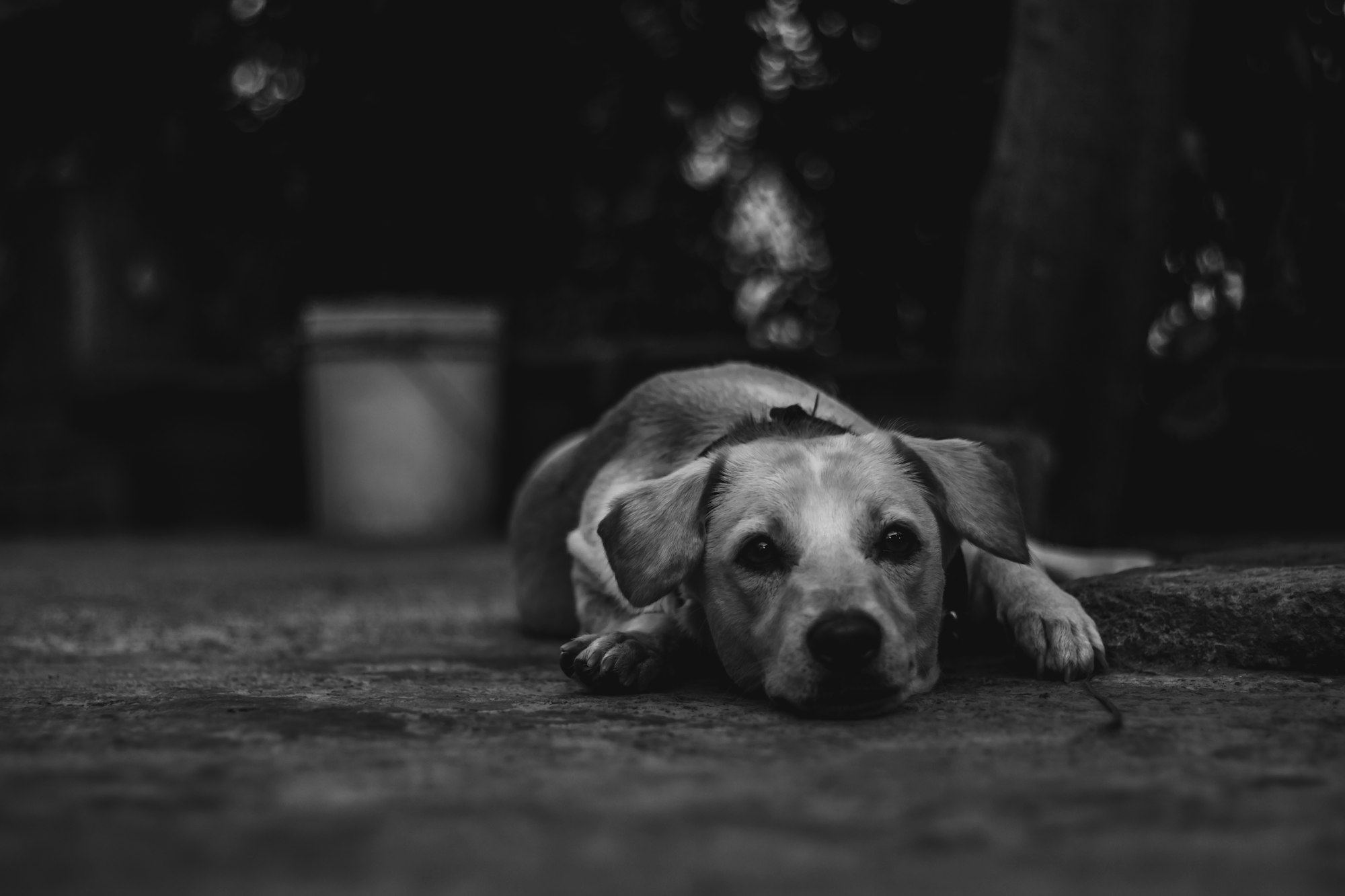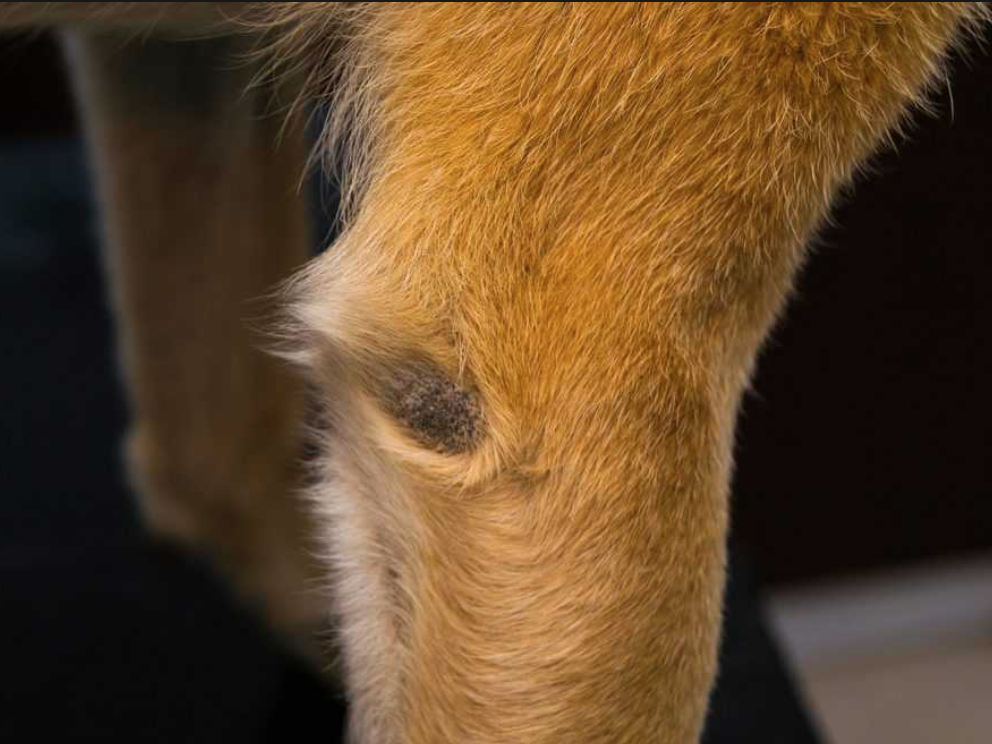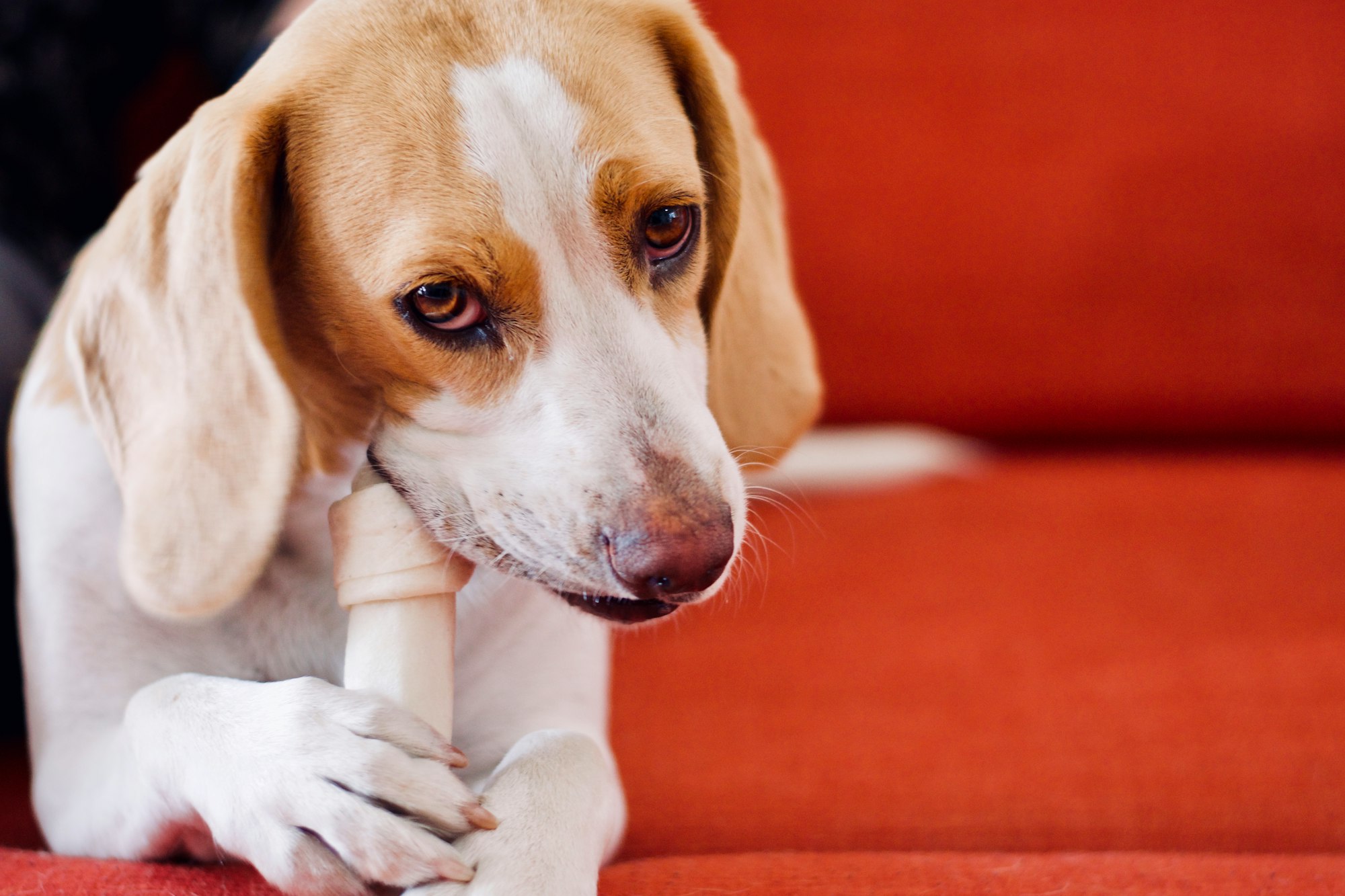You may have heard of "dog elbow callus." It's a condition that can affect dogs of all ages and breeds; thus, it is vital to know its treatment if it appears.
In this post, we'll cover everything about dog elbow callus, its causes, symptoms, and treatment options. In addition, include some preventive measures. Therefore, by the end of the article, you'll have a better understanding of dog elbow callus and how to keep your furry friend healthy and happy.
How to Identify Dog Calluses
Dog elbow calluses appear as thick, rough patches of skin on the elbows of dogs. They can be gray or black and feel hard or rough to the touch. In some cases, they may be cracked or bleeding.
These calluses are also known as pressure sores. If left untreated, these calluses can become infected, making it even more vital to address them as soon as possible.
Why Do Calluses Develop in Dogs?
Dogs develop calluses when they repeatedly put pressure on the same spot. It may happen when walking on rough surfaces, running on hard pavement, or wearing tight collars or harnesses.
Calluses also form when your dog has an abnormal foot structure, causing one part of the sole to bear more weight than another part. For instance, suppose the dog has a “rocker” foot (the foot is curved like a rocking chair); he'll feel more pressure in one spot than another.

Other Causes of Callus Formation
Obesity. Overweight dogs have increased weight-bearing on their feet due to increased body weight. This places greater friction on the footpad, which can lead to callus formation if left untreated.
Hypothyroidism (low thyroid function). This causes a number of physical changes in dogs, like muscle weakness, weight gain, and fatigue. These symptoms can lead to an increase in pressure placed on their feet during exercise or jumping, causing callus formation.
Symptoms of an Infected Callus
- Redness and swelling around the callus. It can indicate infection spreading to other parts of the body.
- Tenderness or pain when the callus is touched. It is a sign of infection and needs vet attention.
- Pus or discharge coming from the callus.
- A foul odor. If you notice a foul odor coming from your foot, it means there's an active infection that needs immediate attention.
- Increased licking and chewing of the affected area. If you see your dog chewing or licking at their paw, it could be due to pain or irritation from an infection.
- Loss of hair around the callus. Suppose the callus is infected and causing pain for your dog; they may try to chew it off, leading to hair loss in that area.
- Fever or lethargy. An infected callus may result in fever or lethargy, as well as other symptoms.
How Are Elbow Calluses Diagnosed?
Elbow calluses are diagnosed by a veterinarian through a physical examination. The vet will look for signs of redness, swelling, pain, sensitivity, oozing, bleeding, odor, and limping on the affected leg.
Suppose any of these signs are present. The vet may recommend further tests, like X-rays, to determine the cause of the callus. In addition, the vet may take a sample of the callus to test for infection or other underlying issues.

What Are the Dog Callus Treatments?
There are three methods of treating calluses as follows:
1. Antibiotics
If a dog's elbow callus becomes infected, your vet may prescribe antibiotics to help fight the infection. Antibiotics are administered orally or topically, depending on the severity of the infection. Topical antibiotics may be in the form of ointments or creams applied directly to the affected area.
2. Therapies
There are a variety of therapies that can be used to treat elbow calluses. One of the common treatments is to apply a protective pad or sleeve to the affected area. This helps in reducing friction and pressure on the callus.
In addition, your vet may recommend using a moisturizing cream or lotion to keep the callus soft and supple. This can help prevent cracking and bleeding. Other therapies may include physical therapy, heat or cold therapy, or laser therapy.
3. Surgery
In severe cases, surgery may be necessary to remove the callus. This is done under general anesthesia and involves removing the thickened skin and underlying tissue. Following surgery, your dog will need to wear a protective pad or sleeve to prevent the callus from returning.
How to Treat Dog Elbow Calluses at Home
Suppose your dog is suffering from elbow calluses; home remedies can be an effective way to treat it without taking your pet to the vet.
1. Adjust Your Dog's Diet
If your dog has been diagnosed with elbow calluses, consider changing his diet. Some foods are very hard on their joints and cause inflammation, leading to painful calluses. Talk with your veterinarian about what foods are best for him. Your vet may recommend a special diet or supplements to aid in reducing inflammation in the dog's joints.
2. Keep the Elbow Clean and Dry
Use a damp cloth to wipe down the area between the toes and around the elbows every day. Try to avoid harsh chemicals or cleaners on this sensitive skin because this could irritate it even further.
3. Use a Protective Pad or Sleeve
Dogs who have had surgery for elbow calluses can benefit from wearing a protective pad over their elbows when outside. This will help protect them from irritation and prevent wound licking.
4. Soft Bedding
Soft bedding is another step in treating your dog's elbow calluses. The bedding should be made of cotton or fleece and should not be too thick.
This will give your dog's elbows a cushion between them and the floor or ground that they rest on. It is also important to have another soft surface under the bedding. Thus, they do not bunch up underneath your pup's elbows when they try to move around while lying down.
5. Exercise
Exercise is an important part of treating your pet's elbow calluses. Dogs are very active animals and need regular exercise in order to stay healthy and happy. A sedentary dog will quickly develop muscle atrophy and other health problems.
Therefore, make sure that your dog gets plenty of exercises each day. For instance, take them outside for walks or runs around the neighborhood every day so they can get some fresh air while doing something they enjoy.
Exercise also helps increase blood flow through the body and provides nutrients directly to damaged areas, such as those found on the elbows, after long periods of activity without rest breaks in between each session.
Ways to Prevent Dog Elbow Calluses?
- There are things you can do to prevent dog elbow calluses.
- Use a dog elbow callus cream or lotion to soften the area and make it more comfortable for your dog.
- Trim your dog's nails regularly so they don't dig into his elbows when he runs or walks on concrete or asphalt. You can also try a scratch board if they do not like their nails to be trimmed.
- Suppose your dog has an undercoat, brush it out with a slicker brush or pin brush every few days. Therefore, hair doesn't mat up and rub against the skin when moving.
- Make sure the dog is at a healthy weight by putting him on a diet.
Are All Dogs Prone to Elbow Calluses?
Not all dogs get elbow calluses; however, they're fairly common in certain breeds. Large or heavy-boned dogs, such as Great Danes, Mastiffs, and Saint Bernards, are more prone to developing elbow calluses. It is due to the pressure and friction caused by their weight.
Working dogs that spend a lot of time lying on hard surfaces, like police dogs, may also increase the risk of developing elbow calluses.
That being said, the calluses typically develop as a response to pressure and friction. Thus, any dog that spends a lot of time on hard surfaces may develop it.
Wrap Up
Elbow calluses are a common condition many dogs experience, especially those that are large, heavy-boned, or that spend a lot of time lying on hard surfaces. While they are not a cause for concern, it's vital to keep an eye on them for prevention and a healthy canine.
If you do notice a callus forming, it's a good idea to talk to your vet about the best ways to treat it and prevent it from becoming a problem. With proper care, your dog can live a happy and healthy life, free from the discomfort of elbow calluses.
For more helpful articles about pet-parenting tips, check out the Off Leash blog at TryFi.com.
Want to know more about TryFi.com? The Fi Dog Collar is a GPS tracking collar that not only keeps track of your dog’s location, activity levels, and sleep patterns, but it also alerts you if your dog escapes your backyard. This is the fastest way to find your dog after an escape. Try the Fi Dog Collar today!

